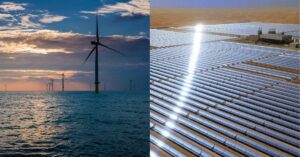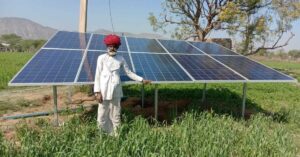IIT Guwahati Startup’s Floating Solar Plants Conserve Water Too
IIT-Guwahati-incubated startup Quant Solar Technologies' Floating Solar Plants are an innovative way to harness solar energy while conserving water and land.
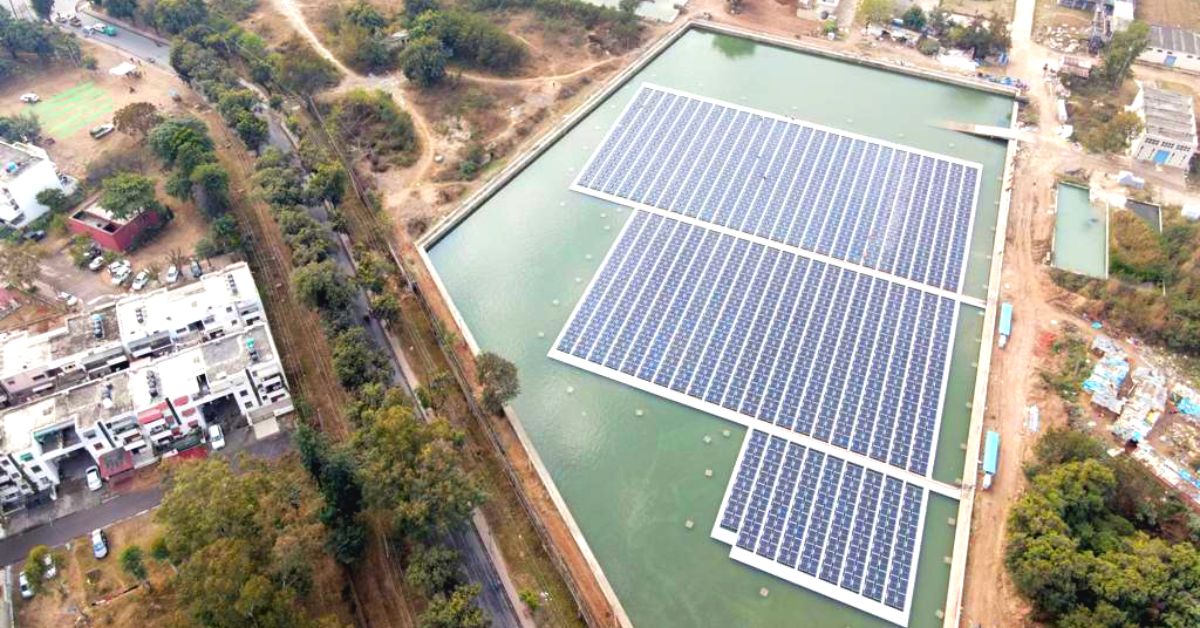
Quant Solar Technologies, a clean-tech startup incubated at the Indian Institute of Technology, Guwahati’s (IIT-G)’s cutting-edge Technology Incubation Centre (TIC), has seemingly found a more sustainable way of harnessing the power of solar energy—floating solar technology.
Installed on water bodies such as dams and reservoirs, this piece of technology can restrict evaporation loss up to 70%—a feature particularly important in water-scarce regions. These floating solar plants are gaining prominence as the third pillar of solar installations, complementing the well-established domains of rooftop solar and ground-mounted solar plants.
Speaking to The Better India, Pankaj Kumar, co-founder and director, says, “Quant Solar Technologies was established in 2016. The inspiration behind founding this startup was driven by the need to contribute to India’s economic development and address environmental concerns associated with traditional energy production. The motivation was to pioneer innovative and sustainable engineering solutions in the field of renewable energy.”
“Our innovative startup isn’t just about clean energy but also about conserving water by containing evaporation; saving precious land for better utility, improving power generation due to the cooling effects of water and many more. This is a monumental leap towards environmental sustainability. With thousands of reservoirs and big water bodies in India, the potential is enormous and the opportunity to make an impact is incredible,” he adds.

Perks of floating solar plants
Siddhant Agarwal, co-founder and director, claims, “The decision to focus on floating solar plants was motivated by their unique advantages. They save land, conserve water, and offer increased energy generation of power due to the cooling effect of water underneath the photovoltaic module, among other benefits. Unlike rooftop or ground-mounted solar they are installed on water bodies, reducing evaporation loss by up to 70%. This technology efficiently contributes to national solar goals while leaving zero footprint at the end of the project lifecycle.”
Siddhant goes on to add, “In steering through the landscape of clean energy, Quant Solar has also introduced a wide range of products embodying our dedication to innovation within the floating solar sector. We firmly believe that these advancements will not only fulfil the growing energy needs but will also make substantial contributions to environmental conservation.”
On the subject of environmental conservation, Pankaj elaborates, “Floating solar plants play a crucial role in water conservation by acting as a protective cover over the water surface.”
“This unique design serves as a shield, reducing the direct exposure of sunlight to the water below. The significance of this lies in its ability to limit the absorption of heat by the water, effectively curbing the rate of evaporation,” he explains.
In simpler terms, when sunlight directly hits the water, it causes the water to absorb heat, leading to an increase in temperature and accelerated evaporation. Floating solar plants intervene in this natural process by providing a barrier that prevents excessive heating, and subsequently reducing evaporation. The importance of this feature becomes evident in its multifaceted benefits, according to Siddhant.
“Firstly, by mitigating evaporation, these floating solar plants contribute significantly to the conservation of water bodies. This is particularly vital in regions facing water scarcity or where water is sourced for various essential purposes,” he explains.
“Also, the reduced evaporation facilitated by these plants helps maintain stable water levels in reservoirs, ensuring a consistent and reliable supply of water for diverse needs. Additionally, the ability to conserve water aligns with principles of sustainable resource management, ensuring that water resources are utilised judiciously and sustainably. Beyond immediate benefits, the conservation of water bodies positively impacts the environment by preserving aquatic ecosystems, supporting biodiversity and maintaining ecological balance,” he adds.
In essence, the innovative design of floating solar plants not only harnesses clean energy but also actively addresses environmental concerns by promoting responsible water usage.
“This dual-purpose approach contributes to the sustainable management of water resources, making these solar plants a valuable asset in the journey towards a more environmentally conscious and resource-efficient future,” claims Pankaj.
Speaking to Mercom India in May 2023, Deepak Ushadevi, MD and CEO of Ciel & Terre India, said, “We do not face any issues with water bodies in India. According to data, we have 5,534 dams and reservoirs available. Even if we use only 40% to 50% of them, we can generate over 200 GW of power from these projects. In addition, we have backwaters and both manual and non-manual reservoirs, providing us with plenty of options. We can optimise capacity utilisation by considering dams and reservoirs for floating solar and natural hydropower.”
In the interview with Mercom India, Deepak went on to claim, “Looking at it from a cross-functional perspective, ground-mounted solar structures require the use of purlins and rafters, along with piling work. On the other hand, we need to use anchoring, mooring and hearing anchors for floating solar projects to withstand high winds, depths, waves, currents, water level variations, droughts, floods and more. It is the most expensive part of the project. However, we also get extra generation capacity over 25 years, which offsets the additional cost.”
But what is the average cost of power for floating solar projects?
“The average power cost is around INR 3.15 (~$0.038)/kWh- INR 3.3 (~$0.040)/kWh, which is the PPA (power purchase agreement) signing-off rate. However, some variations may be based on the availability of modules, BCD (basic customs duty), ALMM, (approved list of models and manufacturers), and other factors that affect transactions and cause minor delays. The cost difference between ground-mounted and floating structures is only 7-10%, with the latter being slightly more expensive due to its technology. However, over time, the cost difference will be offset by savings in operation and maintenance costs,” said Deepak.
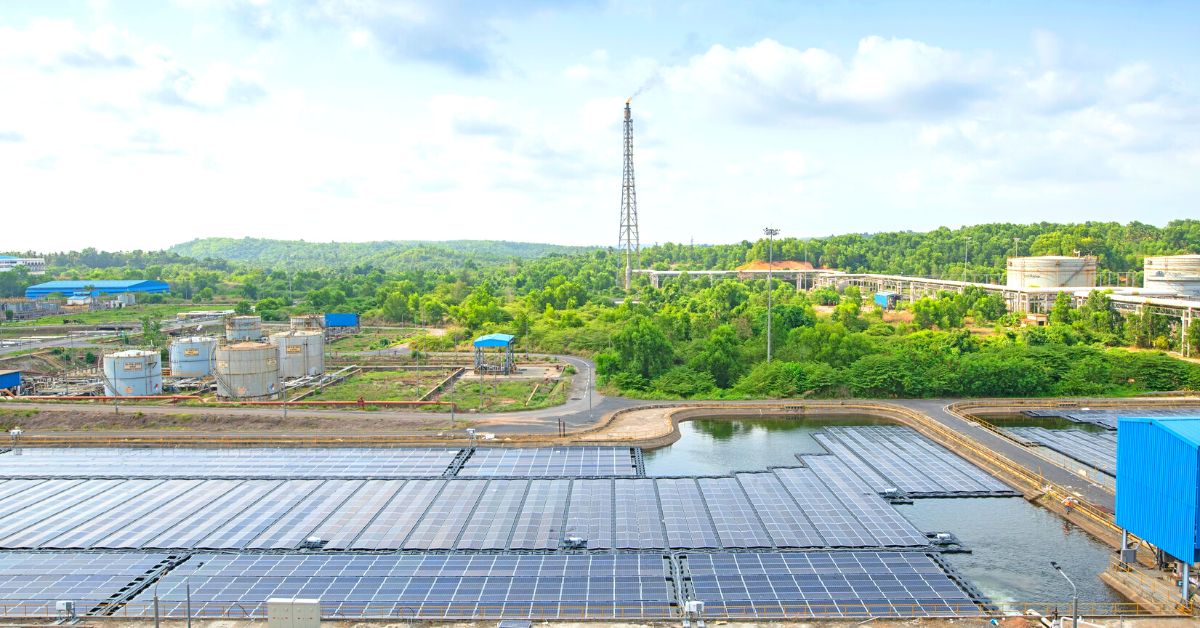
Growing presence
Since its inception, Quant Solar has worked with multiple public sector enterprises, state government bodies and private companies. It has also delivered India’s first megawatt scale floating solar plant of 2 MW capacity installed in Mudasarlova reservoir located in Visakhapatnam in 2018 and one of the world’s largest Floating Solar Plant of 36 MW for NTPC.
Thus far, Quant Solar Technologies has commissioned close to 15 individual floating solar projects across states including Andhra Pradesh, which has the highest number, West Bengal, Karnataka, Assam, Bihar, Maharashtra and union territories like Chandigarh.
The potential is massive. According to a report by a New Delhi-based think tank The Energy and Resources Institute (TERI), India’s reservoirs cover 18,000 square kilometres with the potential to support 280 GW of floating solar plants.
Having said that, installing these floating solar plants comes with its challenges. These include engineering for specific environmental conditions, ensuring stability on water and addressing issues related to aquatic ecosystems. Maintenance involves regular checks for the impact of weather conditions, water quality and the overall structural integrity of the floating platforms.
On the subject of aquatic ecosystems, critics believe that these solar plants could potentially prove problematic in the long run. Speaking to Mongabay India, TV Ramachandra, coordinator of the Energy and Wetlands Group at the Centre for Ecological Sciences, Indian Institute of Science (IISc), said, “For an ecosystem to function, its structure should be left intact. Spatial extent of the solar panels can alter the amount of sunlight entering the system.”
“This can interfere with various levels of [the] food chain and biogeochemical cycles (water cycle, carbon cycle, nitrogen cycle) of the aquatic ecosystem. Floatovoltaics is an ad-hoc solution, which will prove to be unsustainable in the long run,” he added.
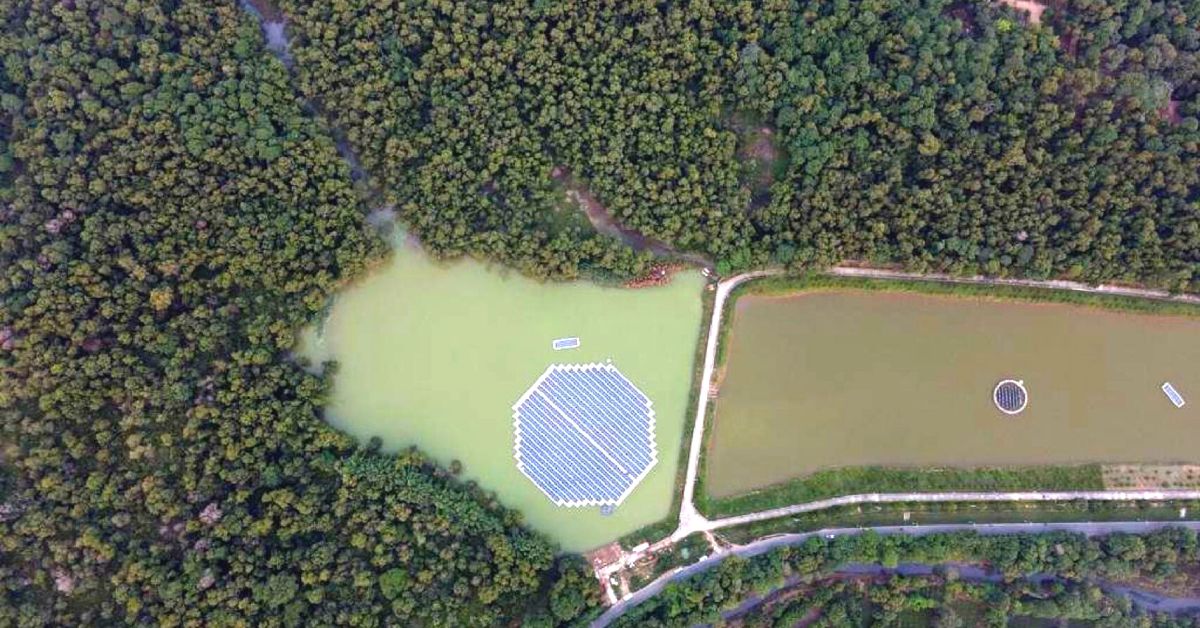
Funding and support
For the most part, Quant Solar claims to focus on in-house design, engineering, and research and development capabilities for key components like the floating platform, solar panels, anchoring systems and the electrical system. “While the company develops many components locally, some specialised components may be sourced globally based on specific project requirements,” notes Pankaj while speaking to The Better India.
The start-up has also strategically aligned itself with global leaders by joining a consortium led by Det Norske Veritas (DNV), “a globally leading quality assurance and risk management company”, in the Netherlands. According to Siddhant, this strategic collaboration cements Quant Solar as a key player in shaping global standards for floating solar plants.
“Regarding funding details, we regret that specific information cannot be provided directly at this time. However, the investors in Quant Solar Technologies include IIT-Guwahati and Union Bank of India. The consortium led by DNV in the Netherlands has played a pivotal role in our growth as a venture. This strategic collaboration has allowed us to align ourselves with global leaders in the clean energy sector. Being part of this consortium has not only expanded our network but has also facilitated access to cutting-edge technologies and industry expertise,” he says.
“It positions Quant Solar as a key player in shaping global standards for Floating Solar Plants, showcasing our technical prowess and making impactful contributions to the industry,” he adds. If you found our stories insightful, informative, or even just enjoyable, we invite you to consider making a voluntary payment to support the work we do at The Better India. Your contribution helps us continue producing quality content that educates, inspires, and drives positive change. Choose one of the payment options below for your contribution- By paying for the stories you value, you directly contribute to sustaining our efforts focused on making a difference in the world. Together, let’s ensure that impactful stories continue to be told and shared, enriching lives and communities alike. Thank you for your support. Here are some frequently asked questions you might find helpful to know why you are contributing?

Meanwhile, speaking about Quant Solar Technologies, Professor Senthilmurugan Subbiah, chairperson of the IIT Guwahati – Technology Incubation Centre (IITG-TIC) said, “Quant Solar isn’t just an emerging start-up. It is making significant contributions to environmental sustainability.”
(Edited by Padmashree Pande; Images courtesy Quant Solar Technologies)
This story made me
-
97
-
121
-
89
-
167





